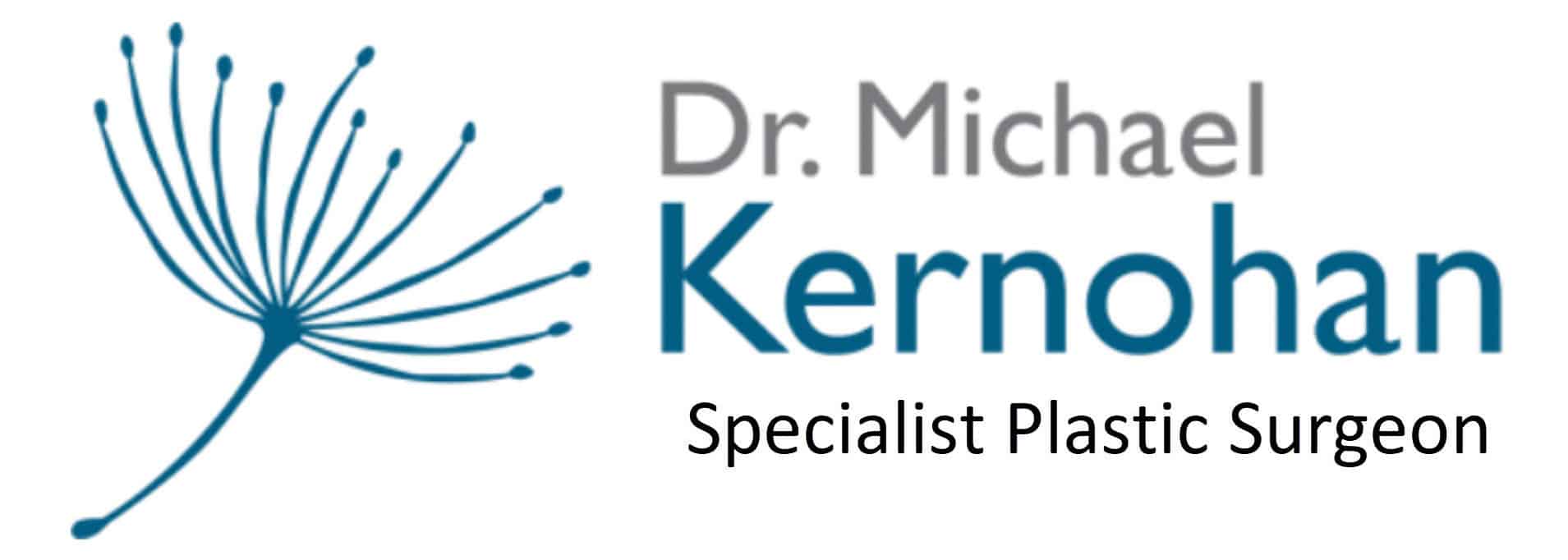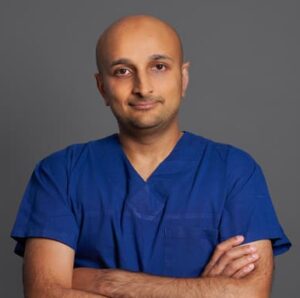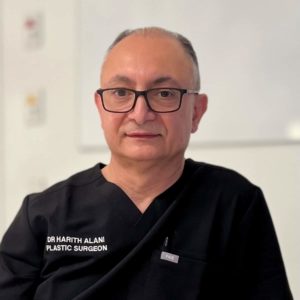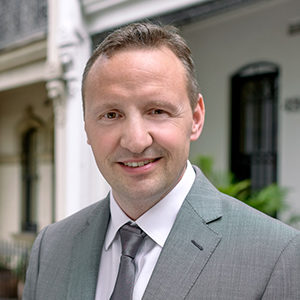Skin cancer is one of the top 5 most commonly diagnosed malignancies in Australia. For people diagnosed with skin cancer, skin cancer surgery is very likely to be mentioned as a plausible therapeutic option. During surgery, doctors basically cut out the cancer and a lot of surrounding tissue. Consequently, there’s always a possibility of being left with a large wound where the cancer was removed.
Sometimes the void or hole can be closed nicely with normal stitches. Other times though, the surgery may leave a wound defect that is so large that stitches alone can’t close it. Such large wounds often cause cosmetic concerns. As a result, they can have detrimental impacts on appearance and function. Skin grafts are often used when a large wound requires more than just stitches.
Specialist Plastic Surgeons Dr Varun Harish, Dr Hari Alani and Dr Michael Kernohan perform Skin Graft Surgeon in Southwest Sydney and the Southern Highlands.
The Pure Visage Plastic Surgery Clinic is located in Gregory Hills.
Skin Graft Surgery Explained
Everything that an aesthetic plastic surgeon does aims to restore function while improving the aspect of your skin. To achieve these goals, it’s sometimes necessary to take healthy skin from one part of the body and use it to cover defects such as a skin surgery wound elsewhere. This is what skin grafting is all about.
Of course, skin graft surgery isn’t simply cutting skin from one area and pasting it onto the wounded area. A lot of expertise and medical knowledge is needed to:
- Meticulously select a skin graft based on the desired colour, consistency, texture, and robustness
- Properly harvest skin using techniques that ensure graft success
- Adequately prepare the skin graft so that it fits its specific destination
- Fix the graft so that it takes and survives in its new location
- Encourage healing with minimal recovery time, pain, and a very low risk of complications
“Skin grafting surgery is sometimes the only solution to get the best possible results for the patient. It is a delicate procedure that should be performed with utmost care.
Dr Michael Kernohan – Sydney Plastic Surgeon
Different Types of Skin Graft
Autografts – Most plastic surgery techniques for skin cancer use autografts. Autografts are skin grafts harvested from one area of the body and used on a different part of the body. The area from which a skin graft is harvested is called the donor site.
Allograft – Sometimes a skin graft may be fashioned from cadaver skin that has been frozen and stored. Another person may also donate the skin. Such a skin graft is referred to as an allograft.
Xenograft – There are also times when plastic surgeons use grafts taken from a pig or any other nonhuman species. Such is a xenograft.
The human body tends to reject allografts and xenografts within several days. As such, they are used as a temporary wound covering. They must later be replaced with an autograft.
Synthetic wound dressings and artificial skin grafts are also viable options. They also have their benefits and disadvantages.
Selecting the Best Place to Harvest a Skin Graft
The decision on where to harvest skin for grafting will be guided by your surgeon’s judgment and a preoperative plan created during your consultation meetings.
Essentially, skin grafts can be harvested from anywhere on the body. However, skin will only be taken from a donor site which the surgeon feels will have the best functional and aesthetic outcomes.
Skin can be harvested from a donor site adjacent to the defect. Such a graft, known as Burrow’s graft, is sometimes preferred because it offers the best match in terms of both colour and texture.
A major principle in skin graft is trying to achieve similarity between the donor and defective skin characteristics. A surgeon will always try to attain a match in the expected aesthetic appearance—’like skin is best repaired with like skin.’
There are other instances when the skin graft has to be acquired from donor areas distant from the defect. Grafts may, for example, be taken from the thighs, clavicular skin, nasolabial fold, palm, sole, abdomen, groin, buttocks, back, scalp, etc.
Before deciding on the best donor site, your surgeon will consider :
- Postoperative comfort
- Postoperative mobility
- Risk of infection
- Graft preparation requirements
- Postoperative care needed
- The tendency of the donor site to form large scars.
It’s only logical that skin is harvested from a site with minimal interference with the patient’s recovery and rehabilitation after skin cancer surgery.
Other nonmedical considerations Dr Kernohan makes when deciding on where to harvest skin include:
- Your clothing style. Most surgeons prefer donor areas that are often hidden by clotting
- The skin colour and texture around the wound (defect) left behind after skin cancer surgery
- The amount of scarring that may occur at the donor site
Skin Graft Harvesting Techniques
The main surgical tool for harvesting skin is the dermatome. Dermatomes are special knives/razors that cut out thin skin slices from the donor site.
Many types of dermatomes, electric, air-powered, and manual, can be used. And in as much as the surgeon’s skill is essential when harvesting skin, the technique and apparatus (dermatome) used could mean the difference between successful grafting and suboptimal outcomes.
Dr Michael Kernohan, therefore, ensures that his team works with the best, cutting-edge equipment.
When collecting small skin grafts, local anaesthesia may be applied at the donor site. Large skin grafts will, however, be collected under general anaesthesia. After skin has been harvested, the donor site will be dressed to protect it from infections and trauma.
Types Of Skin for Skin Grafts
The skin consists of two main layers: an outer epidermis and an inner layer, the dermis.
The epidermis is a tough outer protective layer that consists of a superficial layer of dead cells and several underlying layers of rapidly dividing cells.
The dermis mainly consists of connective tissue. It also has blood vessels, sweat glands, oil glands(sebaceous glands), hair follicles, nerves, and lymphatics.
Depending on how much of the epidermis and dermis a graft contains, it is considered as either a partial-thickness graft or full-thickness graft.
Other Types of Skin Graft
Partial-Thickness Graft or Split-Thickness Skin Grafts
Split thickness grafts (STSGs) include the epidermis and a small portion of the underlying dermis.
- An STSG is usually harvested using a dermatome
- The skin mustn’t be harvested too deep at the donor site. This is because the grafted tissue needs to be nourished by the dermis of the recipient site for a split-thickness graft to be successful
- The donor site from which an STSG is taken usually heals within a few days
- Once transferred to the new recipient wound bed, a few small sutures may be used to hold the graft in place
- A sterile, non-adherent dressing will then be used to cover this area for a few days
Full-Thickness Grafts
Full-Thickness Skin Grafts (FTSGs) include the dermis and epidermis. They also come with hair follicles, sweat glands, and other adnexal structures.
Although more complicated than STSGs, FTSGs will have better outcomes with respect to natural colour, texture, and contour.
- Surgeons often use scalpels (rather than dermatomes) to harvest full-thickness grafts
- After cutting around, the FTSG is usually lifted off with a special hood
- Fatty tissue is then trimmed off from the graft (defatting)
- The donor site needs to be closed—often done using an absorbable suture
- The graft is transferred onto the wound and secured in place with the appropriate fixation technique (see below)
FTSGs are generally used for small wounds. Common areas where FTSGs are used include the hands, face, and scalp.
Reconstruction with FTSGs usually results in good cosmetic outcomes and durable skin cover.
Composite Skin Grafts
Some large defects require 3-D skin reconstruction using a graft that includes skin tissues, fat, and/or cartilage. Such as graft is known as a composite skin graft.
A composite graft containing skin and cartilage may, for instance, be used to repair the nose.
Preparing a Skin Graft Before Transplanting
A skin graft begins to shrink as soon as it’s harvested—probably due to the recoil of dermal elastic fibers. After being transferred to the recipient wound bed, the graft will again continue shrining as it heals. This is particularly true for STSGs.
The surgeon needs to compensate for the shrinkage by either harvesting a considerably larger graft or using various techniques to expand grafted skin.
Skin graft expansion may be achieved by:
- Breaking up the donor skin into tiny pieces that will be placed onto the recipient bed (pinch graft)
- Cutting the donor skin into strips (relay transplantation)
- Cutting the donor skin into strips, then sheet grafts, and finally stretching it into a mesh (meshed grafts)
Most of these skin expansion techniques are used when the surgeon needs to cover large areas. As such, they are more frequently used in treating large skin burns and not so much for small skin cancers.
Graft Fixation: Ensuring the Graft Takes and Survives
Fixing the graft onto the defect ensures the graft doesn’t separate from the wound. This helps the graft to take and survive.
Take is a term used to describe a skin graft’s reattachment and revascularization (development of a blood supply).
Once the graft has been transferred onto the recipient site, the surgeon may use various novel methods to ensure that the graft takes and remains fixed onto its new site.
Generally, a skin graft adheres to a new site in 2 phases.
The first phase lasts for about 72 hours after grafting. The graft is held in place during this phase by a thin fibrin layer.
The second phase follows the first phase. During the second phase, fibrous, and vascular connective tissue growth occurs between grafted and recipient skin. The new fibrovascular connections are responsible for keeping the graft in place after the initial 72 hours.
Dr Kernohan will aid graft adherence and survival in various ways, including:
- Immobilizing the area around the skin graft
- Securing the skin graft to the wound using staples, foams, sutures, graft dressings, or other adhesive agents
- Using a sub-atmospheric pressure device to assist in wound closure (VAC therapy)
- Effective dressing and wound coverage
- Ensuring sterility and cleanliness of the area around the graft
You can help your graft take by avoiding activities that:
- Are likely to cause bleeding
- Expose the wound to dirt, water, moisture, and other fluids
- Result in shearing forces that pull the graft away from its bed
Be also on the lookout for infections and report to your doctor as soon as you suspect your wound is infected.
Skin Graft Recovery and Healing
The graft swells during the first 48 hours as it gets engorged with plasmatic fluid.
Within 2-4 days, capillaries start to grow into the graft from its undersurface
Normal blood flow (revascularization) may be restored into the skin graft within 5-7 days.
The dermis may swell remarkably during the first week, but the swelling goes down as blood, and lymphatic vessels grow into the graft.
The healing process generally begins by day 7-8 after the grafting.
STSGs often need to be lubricated within the first three months because they lack sebaceous (oil) glands.
Normal skin sensation over the graft may return as early as 1-2 months post-surgery but may be abnormal for the first year.
Potential Risks and Complications of Skin Grafting
Every surgical procedure is associated with certain risks and potential complications. However, it is important to know that many of these complications can be avoided or can disappear over time with no additional treatment. To find out more about this, check out the risks and complications of plastic surgery page.
Skin Graft Cost Sydney – Prices & Fees – How much does skin grafting cost in Sydney?
The cost of grafting varies from patient to patient. Each grafting case is usually unique hence the rates charged will be different. Different surgeons also charge differently. There are many Medicare Item Numbers for Skin Grafting and Skin Cancer Surgery to claim your Medicare Rebate. You may also get a subsidy from your Health Insurance Fund.
To find out more about fees, check out plastic surgery prices page. Or you can contact Dr Kernohan’s team to set up an appointment or to ask for a cost estimate for your procedure.

Skin Grafting FAQs
How do I prepare for skin graft surgery?
- Start by booking a consultation with your doctor. The doctor will take a thorough preoperative history, do a medical examination, and offer crucial advice regarding any medication or supplements you might need to take or stop taking in the days leading to your skin grafting procedure. You will also be advised on other things such as smoking cessation, dietary adjustments, and physical exercise before the procedure.
How do I take care of my skin graft after surgery?
Patients will receive instructions from their doctor on the necessary postoperative care needed for their skin grafts. Generally, you will receive instructions on:
- How and when to change your dressings
- How to apply antibiotic ointments
- How to take any medication given
- When to return for post-op evaluation
- How to avoid stressful and traumatic events, including hot showers, UV exposure, and strenuous activities
- How to keep your wounds clean, infection-free, and enhance healing.
Ask the Pure Visage clinic team for your post-op instructions.


 Dr Varun Harish FRACS (Plas) – Plastic Surgeon
Dr Varun Harish FRACS (Plas) – Plastic Surgeon




